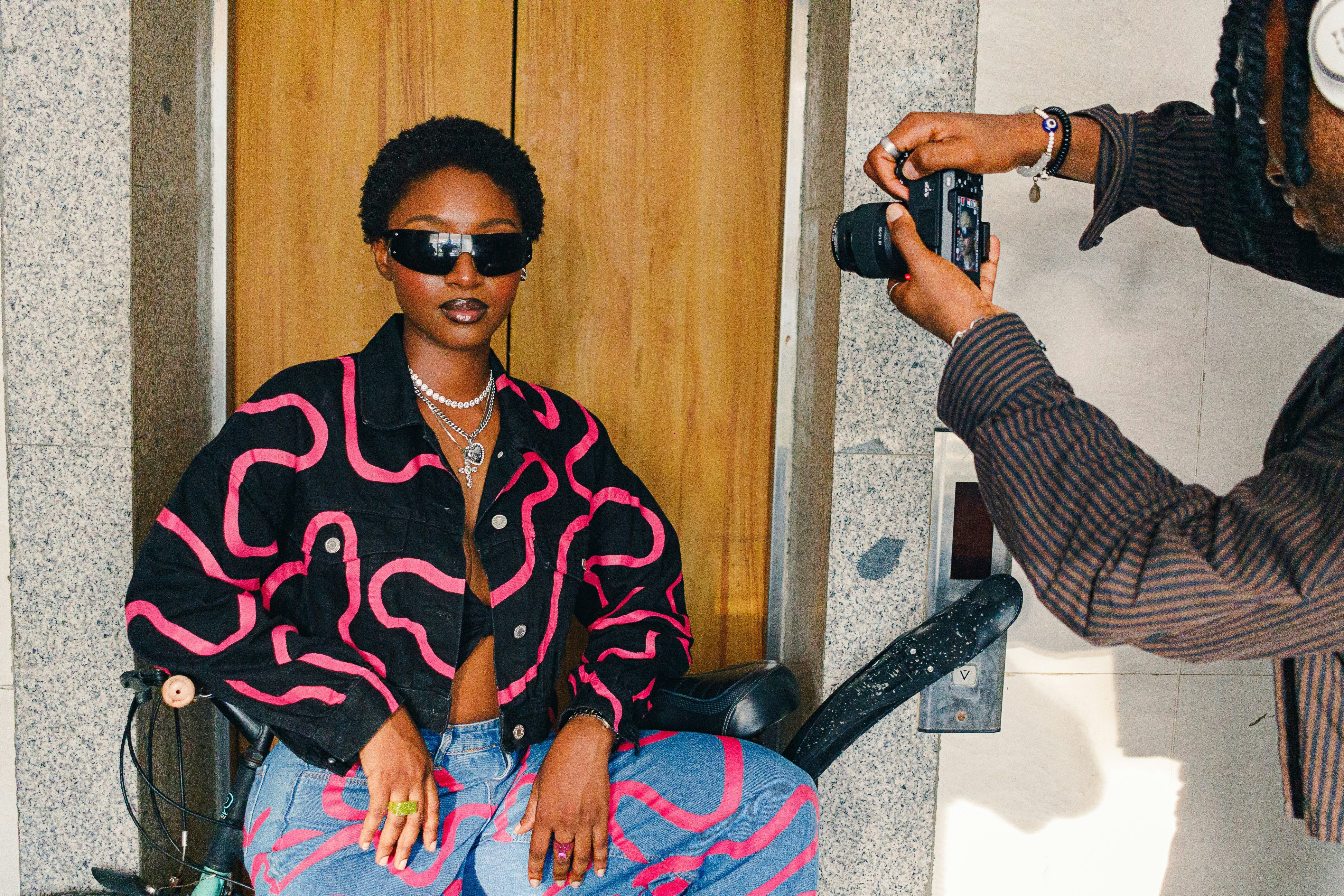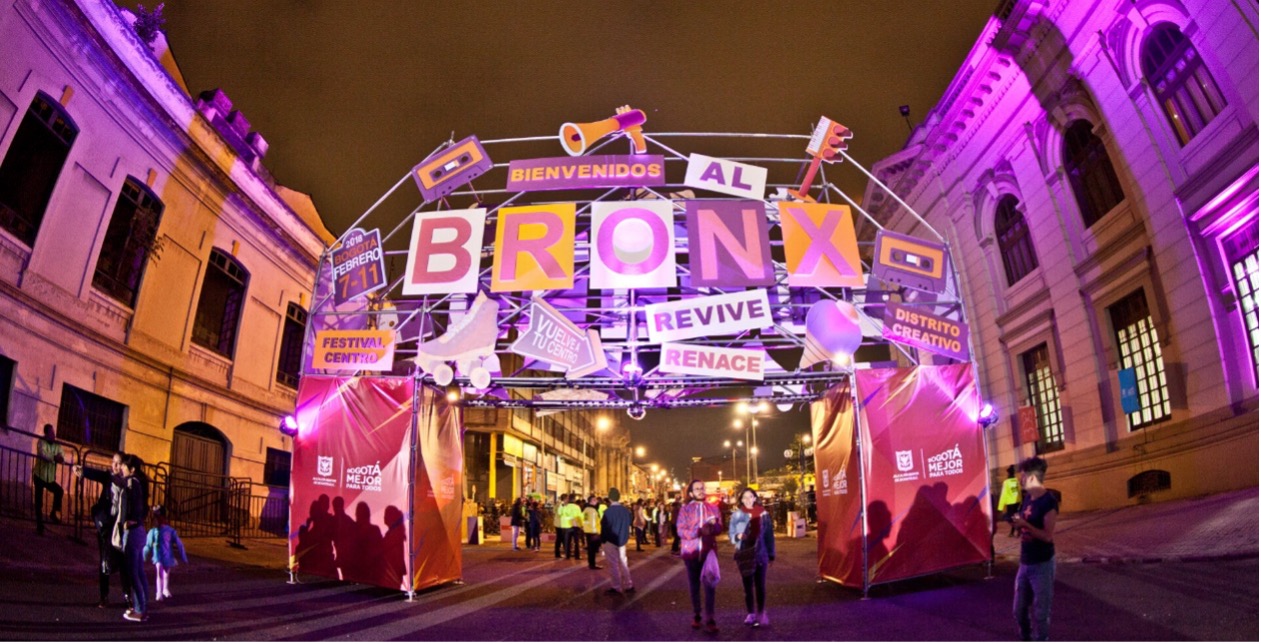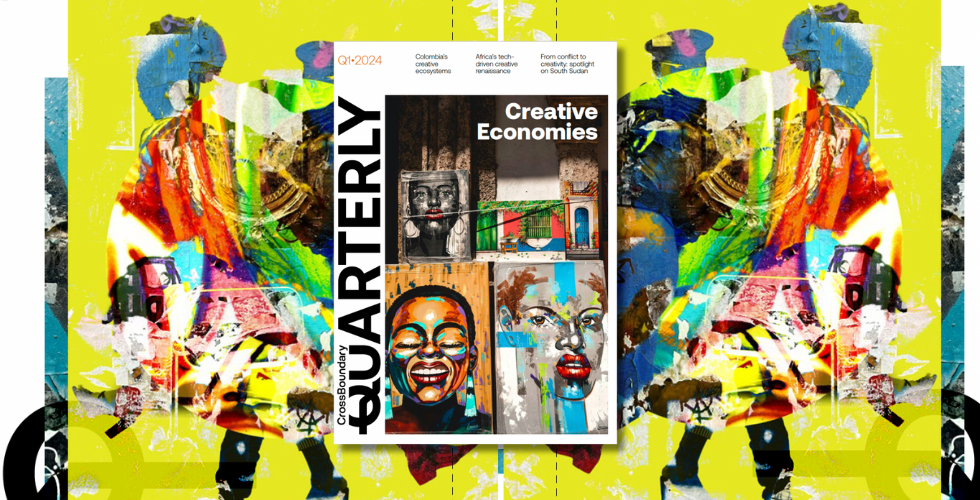
Tech-driven renaissance: unleashing Africa’s creative economy
Over the past five years, Africa's creative economy has witnessed outsized growth, particularly in music and movies, extending its influence on a global audience.
Over the past five years, Africa's creative economy has witnessed outsized growth, particularly in music and movies, extending its influence on a global audience.
Currently, the creative sector in Africa generates around US$4.2 billion annually, with a growth rate outpacing other sectors on the continent. The increased reach is closely tied to the widespread adoption of digital technologies and expanded internet connectivity. Digital platforms, including streaming services, social media, and online marketplaces, have served as a global stage for African creatives to showcase their talents and establish connections with broader audiences.
Catalysts propelling growth within the African creative economy
This heightened exposure is acting as a key catalyst in propelling growth across various economic and social indicators within the African creative economy. In this piece, we highlight five catalysts:
- New monetization models and financial inclusion
- Access to new markets and audiences
- Increased demand for African creative products
- Job creation and skill development
- Attracting local and international investments

1. New monetization models and financial inclusion: Individual Content Creators
Traditionally, content creators and artists in Africa derived income from brand sponsorships and live performances. However, the landscape is evolving with the emergence of tech platforms, providing novel avenues for African content creators to generate and receive income. Platforms such as YouTube have permitted creators to monetize their content since as early as 2010. In recent times, there has been an increase in platforms introducing monetization options.
For example, Facebook’s content monetization launched in 2022 in 20 sub-Saharan African countries, and X (formerly known as “Twitter”) launched its ad revenue sharing program in 2023. Audio streaming services like Spotify and online marketplaces for digital content like Selar have also become increasingly popular, offering digital content creators opportunities to monetize their content. Selar, an all-in-one e-commerce store builder, also revealed that creator collective earnings on the platform doubled in 2023.
The evolving landscape has led to considerable financial empowerment for content creators across the continent. Leading figures such as Mark Angel, a prominent YouTube creator, are now generating millions in annual income, with the average annual revenue potential of a full-time content creator estimated at ~US$100,000. Beyond the financial gains, the democratized access to these platforms and technologies is breaking down barriers, enhancing financial inclusion and empowering individual creators. This shift is not just about new revenue streams; it is fostering a more inclusive and diverse creative landscape.
2. Access to new markets and audiences: African Music
African creatives are harnessing the power of streaming services, social media, and online marketplaces to reach audiences beyond traditional geographic boundaries. A clear example is “The Black Book”, a Nollywood movie that secured the top global spot on Netflix shortly after its debut, accumulating 5.6 million views 48 hours after its debut.
Two songs out of Africa—“Water” by Tyla and “Calm Down” by Rema and Selena Gomez—also charted in the top 10 of the Billboard Hot 100 in 2023. “Water” won the inaugural award for Best African Music Performance at the 2024 GRAMMYs. And “Calm Down” achieved a significant milestone as the first and only song from Africa to surpass 1 billion streams on Spotify. Renowned artists like Libianca and Black Sheriff have also achieved global acclaim with the release of international hits.
This democratization of the creative landscape not only amplifies diverse voices and narratives but also acts as a catalyst for cultural influence across different geographies.
3. Increased demand for African creative products: ANKA
The global interest in African digital content is extending to tangible products crafted by African artisans and entrepreneurs. Tech-enabled platforms are dismantling conventional entry barriers for tangible products such as handmade crafts, textiles, and traditional art, enabling direct connections between African creators and a worldwide consumer base.
ANKA, serving as an all-in-one solution for African creators to reach global audiences, has made significant impact in this space. The platform has successfully facilitated the processing of over US$50 million worth of exports to 175 countries, engaging with 20,000 creators spanning 46 African countries.
Tech-enabled platforms empower African entrepreneurs to navigate the intricacies of international trade, fostering the creation of brands that resonate globally. Which, in turn, contributes to a surge in exports for physical products that showcase Africa’s rich cultural heritage and embeds them on the global stage.
4. Job creation and skill development: SOKO
4. Job creation and skill development: SOKO
The increased demand for African creative products is directly translating into economic benefits, particularly through job creation. Tech-enabled platforms are emerging as key players in reshaping the employment landscape within the African creative economy. With the proliferation of digital platforms, online marketplaces, and the growing influence of Africa on popular culture, there is a burgeoning demand for the continent’s creative outputs, offering new job opportunities for individuals across the region.
A noteworthy example Is SOKO, a women-led, people-first ethical jewelry brand designed to connect artisans in Kenya with the international market. SOKO currently collaborates with ~2,300 artisans in Kenya, enabling them to earn four times as much as they would selling domestically.
In addition, these new technologies are creating a demand for various creative skills, offering new job opportunities for individuals across the continent. Whether searching for jobs as designers, digital marketers, animators, or content creators, young people in Africa are now accessing job opportunities that did not traditionally exist.
Given the youth unemployment rate of ~30% and a rapidly growing youth population on the continent, these new platforms are poised to play a pivotal role in expanding and diversifying job prospects within the African creative economy, contributing to the overall economic growth of the continent.
5. Attracting local and international investments: Universal Music Group and Mavin Records
The integration of technology within the African creative economy is increasingly attracting significant investments from both local and international stakeholders. As technology platforms continue to reshape the landscape, investors are recognizing the potential within the continent’s creative industries and are eager to support startups and enterprises leveraging these platforms to address unique challenges and access untapped opportunities. In a recent development, Universal Music Group, a global music industry giant, acquired a majority stake in Mavin Records, a Nigerian-based record label. Although the specific terms of the deal remain undisclosed pending regulatory approval, earlier reports from October 2023 suggested that Mavin was being valued at over US$125 million, as indicated by Shot Tower Capital. This strategic acquisition comes after Mavin’s successful year, marked by outstanding streaming and digital song sales performances from label artists like Rema and Ayra Starr.
Amplifying Successes with Disruptive Technologies
While Africa’s creative economy continues to show signs of steady growth, the successes over the last few years still fall short of the continent’s true potential. Valued at US$58.4 billion, Africa’s creative economy is only 2.9% of an industry exceeding US$2 trillion. This underscores the substantial opportunities for growth. The United Nations Conference on Trade and Development (UNCTAD) suggests that harnessing technological advances associated with the Fourth Industrial Revolution can propel the sector’s growth.
Globally, creative industries demonstrate faster adoption of new technologies compared to traditional sectors like manufacturing, and a similar trend is evident in Africa. The youthfulness of the demographic within the sector is a pivotal factor, as cultural and creative industries heavily employ young people who are more inclined to experiment with and embrace new technologies. Additionally, the technologies applied within the creative sector are generally accessible with low entry barriers. Furthermore, at the core of the creative industry lies an intrinsic drive for innovation, with creativity and innovation closely intertwined.
Numerous disruptive technologies—including generative AI, virtual and augmented reality, and blockchain—are already making waves on the continent, organizations are leveraging inventive approaches to challenge incumbents and create new markets.
Generative AI
Artificial Intelligence is progressively penetrating the African creative landscape, notably through generative AI. This form of AI possesses the capability to generate conversational text, code, images, audio, and videos that emulate human creativity, offering the potential for heightened productivity among creators on the continent.
Organizations of varying sizes are integrating this technology into their operations, and success stories are already emerging. For instance, Safaricom—East Africa’s leading mobile operator—unveiled what it claimed to be Africa’s first AI-generated TV ad in August of last year.
Subsequently, Safaricom released a series of print and video commercials generated by AI, gaining widespread popularity in Kenya. Coca-Cola also embraced AI during the holiday season in Nigeria, allowing customers to create AI-generated cards through a dedicated platform.
Generative AI is playing a pivotal role in boosting productivity for both individuals and enterprises within Africa’s creative economy. Individual artists can automate elements of their workflow, enabling them to concentrate more on the creative aspects of their work. Meanwhile, enterprises can streamline value chains and production processes, efficiently deploying scarce resources where they are needed most. This integration of generative AI marks a transformative shift, offering new dimensions of efficiency and creativity in the African creative space.
Augmented and Virtual Reality
Augmented and Virtual Reality (AR/VR) hold the potential to revolutionize storytelling and reshape the way content is encountered across the African continent. In a region where diverse cultures and rich histories converge, AR/VR emerge as powerful tools to enhance storytelling, providing audiences with a unique and engaging way to interact with narratives while unlocking new avenues for content monetization.
Today, Art Tech District, an urban arts and technology museum in Nigeria, enables visitors to delve into some of the country’s most significant historical events through Virtual Reality. Startups like VerveAR and MediAR are empowering creators on the continent with tools to transform physical products such as art and fashion items into AR content. This allows global audiences to experience products in more immersive and interactive ways, opening up innovative possibilities for creators to showcase their work on a broader scale.
Blockchain
Blockchain’s decentralized nature has the potential to transform how artists and creators manage their work, from music, art, literature, and more. Blockchain’s transparency and security offer a crucial solution for intellectual property protection, safeguarding creative assets and preventing unauthorized use or piracy, ensuring fair compensation for artists.
Nigerian blockchain startup Trendx has collaborated with The Nollywood Factory, a filmmaking company in Africa to tokenize the intellectual property rights of an upcoming movie project using blockchain technology. By digitally representing real-life assets, this innovative application of tokenization showcases the potential for blockchain to revolutionize intellectual property management within the African film industry.
Conclusion
The intersection of Africa’s cultural and creative industries with technology and innovation is becoming increasingly evident and pivotal for the sector to realize its full potential. A notable example is the projected growth in revenue from digital music streaming on the continent, expected to reach US$500 million by 2025, a substantial increase from US$100 million in 2017 according to the World Bank. Additionally, UNESCO foresees the creation of 20 million new jobs and US$20 billion in annual revenue from Africa’s film and audiovisual subsectors. This remarkable expansion can be attributed to the growing ease of content production and distribution facilitated by the ongoing digital revolution.
In embracing the limitless possibilities offered by technology, Africa’s creative economy is entering a new era, promising not only innovation but also heralding a renaissance in storytelling, artistic expression, and economic empowerment across the continent.





